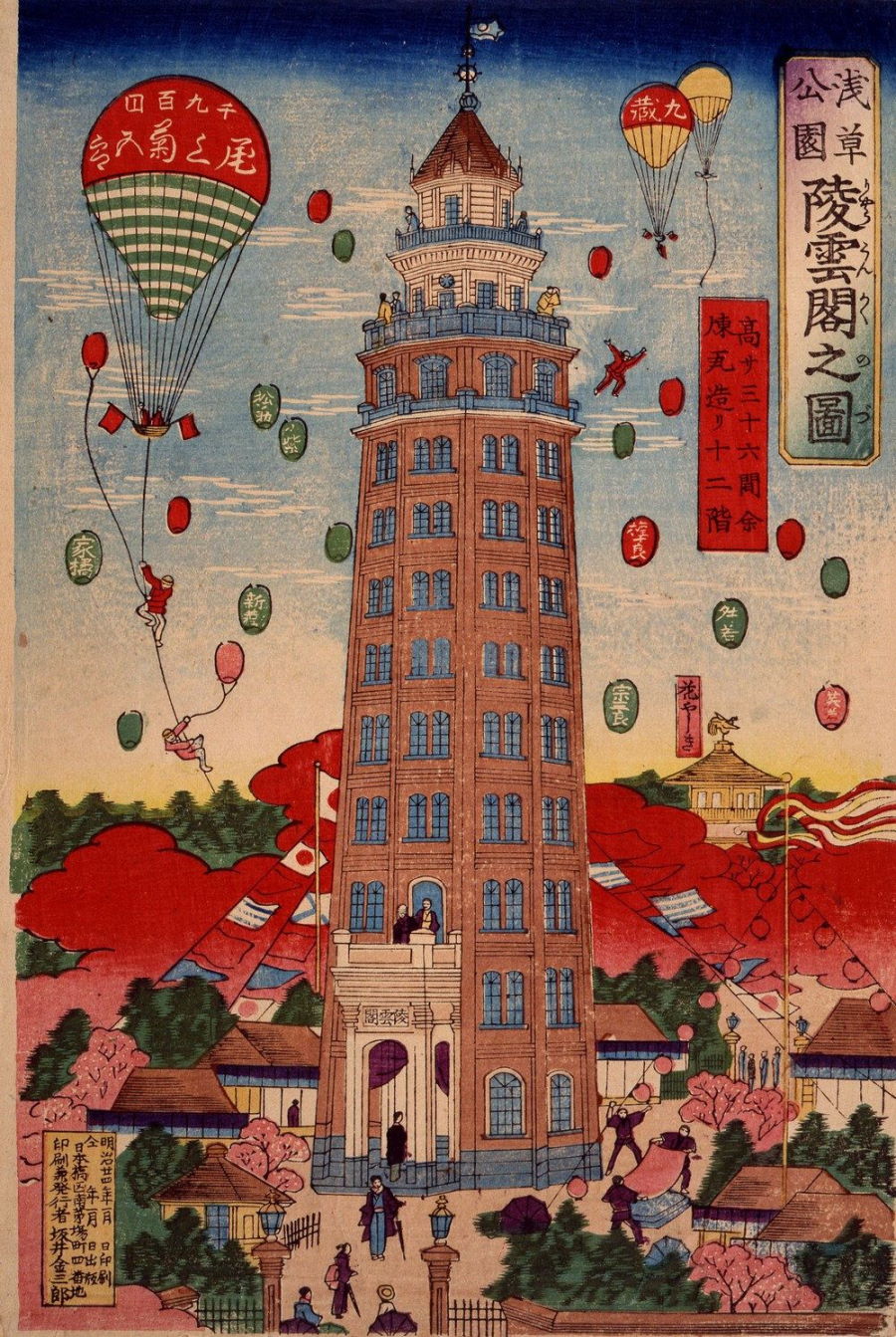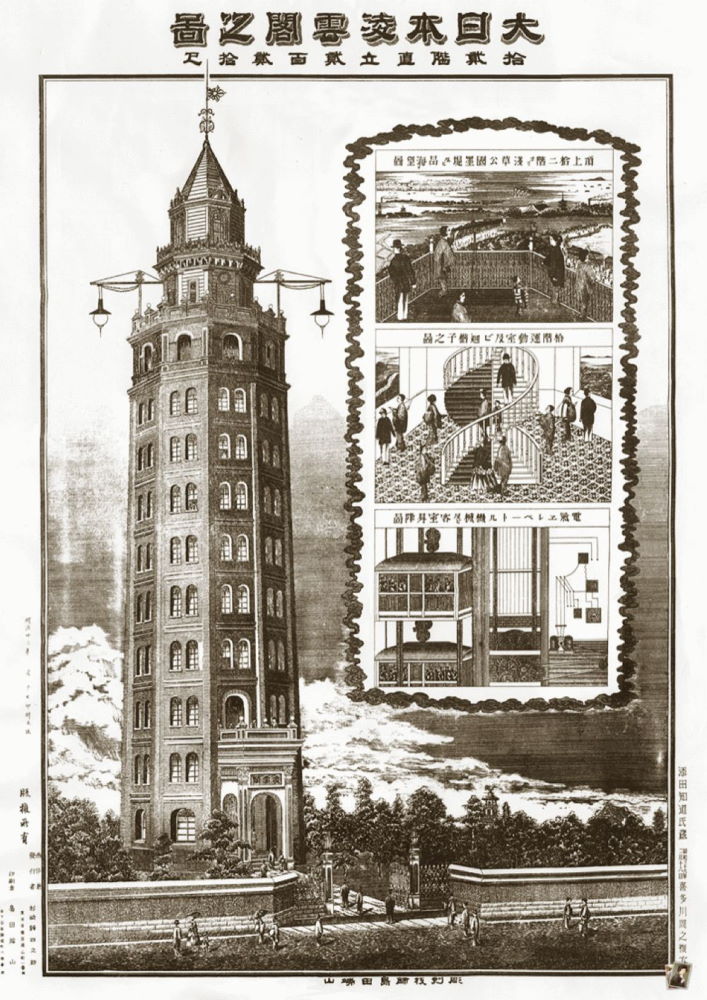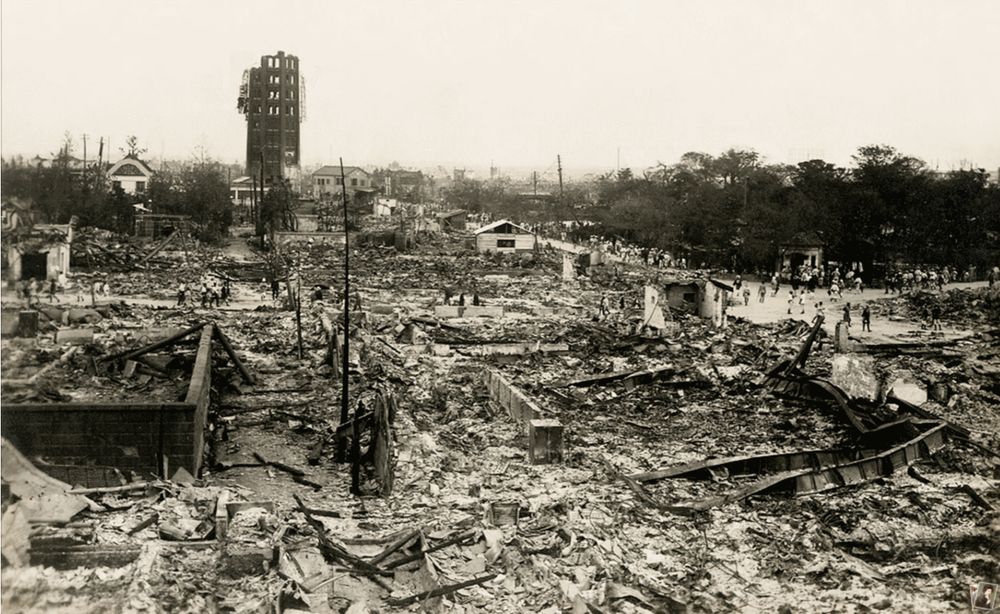For more than thirty years, the Ryōunkaku—Japan's first Western-style skyscraper—was a popular sight in the urban landscape of modern Tokyo, and appeared frequently in commercial images and touristic promotional images of Asakusa. The octagonal edifice stood 225 feet tall, and at that time, it was the tallest structure in the entirety of Japan. Its name translates to “pavilion that soars above the clouds”.

The tower was designed by Scottish engineer William Kinnimond Burton, who was originally invited by the Meiji government in 1887 to help train Japanese engineers in sanitation. At that time, the country was dealing with several serious epidemics, notably cholera. Burton's appointment was remarkable because he was primarily self-taught and lacked many of his colleagues' excellent academic or professional qualifications. It is not known who recommended Burton to the Japanese government, or what inspired him to leave a promising career in London for what he believed to be a temporary assignment in Japan. In any case, Burton did train a number of prominent water system engineers for nine years, and became the sole consultant engineer for the Sanitary Department of the Home Ministry, planning and managing the water and drainage systems of numerous cities, including Tokyo.
Shortly after his arrival in Japan, Burton was also entrusted with the responsibility of designing a tower to symbolize Japan’s successful attempts at modernization. The building’s frame was built out of wood, because wood was the traditional material of construction and Japanese artisans knew how to work with it. But the façade was made out of red bricks.



The building was twelve floors tall, and all the floors had electric lighting. The Ryōunkaku was also the first building in Japan to have electric elevators, and there were two of it, each capable of carrying up to ten passengers. These elevators served the first through eighth floors, the first seven of which was occupied some forty stores selling luxury goods from around the world. On the eighth floor, was a spacious lounge, and adjacent to the lounge was a musical hall where Western music concerts were held, and an art exhibition space where photographs of geisha were displayed. The floors tenth, eleventh and twelfth had observation decks from which all of Tokyo could be seen, and on clear days, even Mount Fuji.
In 1923, thirty-three years after the tower was constructed, the Great Kanto earthquake struck Honshū, and the Ryōunkaku collapsed partially. What remained had to be demolished during clean up.
Today, Japan has more than 270 high-rise buildings above 150 meters. Unlike other Asian countries where the tallest skyscrapers exceed 400 meters, Japan’s skyscrapers are relatively shorter. This is because of strict building code that require any building taller than 50 meters to adhere to strict structural standards because Japan is very prone to earthquakes. This makes construction expensive. The current tallest building in Japan is Abeno Harukas, located in Osaka. It is 300 meters tall.

The partially collapsed Ryōunkaku after the Great Kanto earthquake of 1923.

The partially collapsed Ryōunkaku after the Great Kanto earthquake of 1923.
References:
# When towers fall, Histories Of Science And Technology In East Asia












Comments
Post a Comment